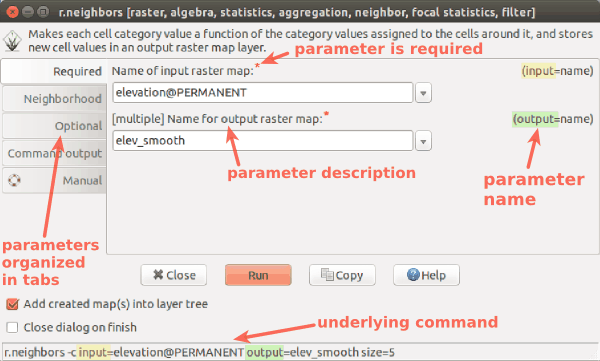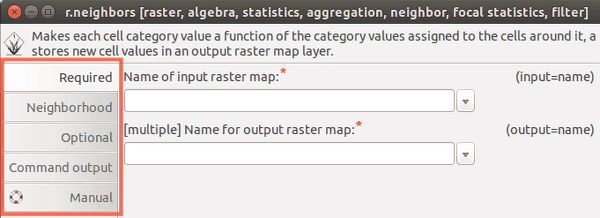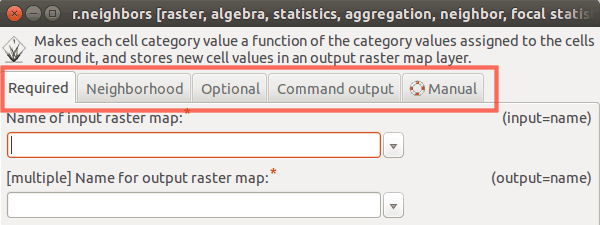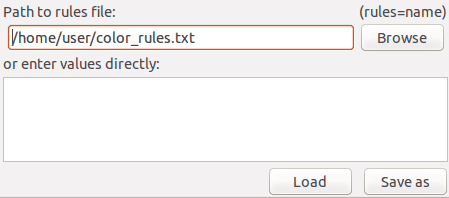
Each parameter can have different type of input fields, for example text entry or drop-down list. Flags are represented as checkboxes. The parameter (or flag) name is visible on the right side of each input field so that it is simple to understand how the module dialog relates to the command representation which is used in the manuals and tutorials. The commands can be used to call the module in the command line, Shell scripts or, with a slight modification, in a Python script.

The style of the tabs can be changed through GUI settings - Appearance - Module dialog style. Note that the style appearance depends on the platform and some styles might be more suitable for different platforms.



Modules which output a new map or a new file have the flag overwrite which must be used when the specified output map or file is already present. If the map or file of the specified name already exist and overwrite flag is not used, an error message appears:
r.slope.aspect elevation=elevation slope=slope ERROR: option <slope>: <slope> exists. To overwrite, use the --overwrite flagIf using the command instead of GUI, these flags are unlike other flags prefixed with double dash:
r.slope.aspect elevation=elevation slope=slope --overwrite --quiet
This applies to external files such as text files or GeoTiff files. This does not apply to raster maps, vector maps and other geospatial data stored in GRASS database which do not need any path to be specified.

If the input file is supposed to be a text file (for example color rules in r.colors), it is possible to type the text in the provided box directly instead of creating a new file in a text editor and saving it. A temporary file is created in this case. By pressing the Save as button, the content of the box is then saved into user specified file, so that user's workflow can be reproduced later. With Load button we can display the content of selected file and edit it directly in the box.


Figure: In the first image, user specified a full path to a file. In the second image, user typed color rules conveniently into the box below, however the rules will not be stored permanently.
r.neighbors --help
Description:
Makes each cell category value a function of the category
values assigned to the cells around it, and stores new cell
values in an output raster map layer.
Keywords:
raster, algebra, statistics, aggregation, neighbor, focal
statistics, filter
Usage:
r.neighbors [-ac] input=name [selection=name]
output=name[,name,...]
[method=string[,string,...]] [size=value] [title=phrase]
[weight=name]
[gauss=value] [quantile=value[,value,...]] [--overwrite]
[--help]
[--verbose] [--quiet] [--ui]
Flags:
-a Do not align output with the input
-c Use circular neighborhood
--o Allow output files to overwrite existing files
--h Print usage summary
--v Verbose module output
--q Quiet module output
--ui Force launching GUI dialog
Parameters:
input Name of input raster map
selection Name of an input raster map to select the
cells which should be processed
output Name for output raster map
method Neighborhood operation
options:
average,median,mode,minimum,maximum,range,stddev,sum,
count,variance,diversity,interspersion,quart1,quart3,
perc90,quantile
default: average
size Neighborhood size
default: 3
title Title for output raster map
weight Text file containing weights
gauss Sigma (in cells) for Gaussian filter
quantile Quantile to calculate for method=quantile
options: 0.0-1.0